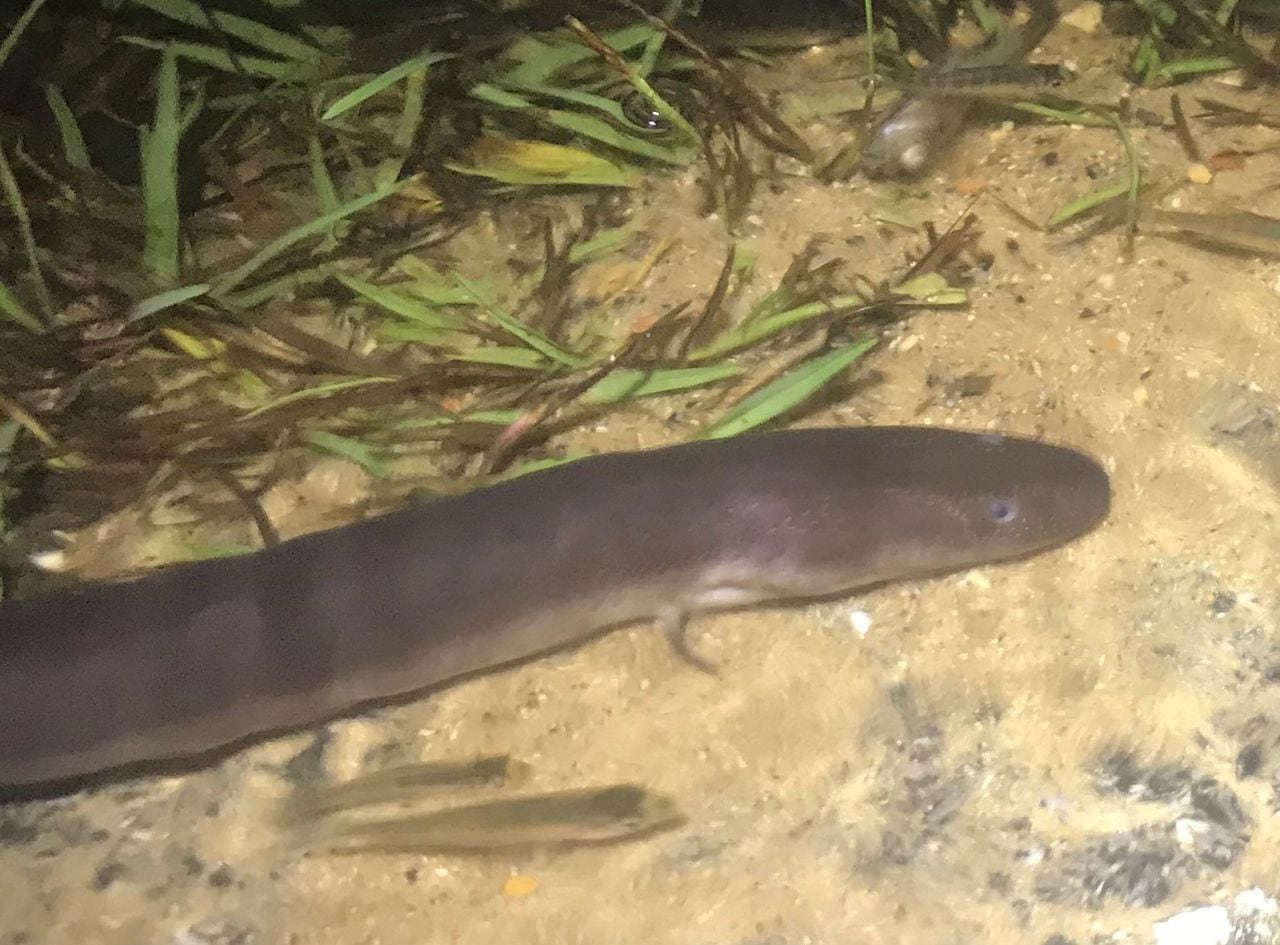Alabama’s weird giant salamander looks like an eel, hunts like a shark
Hidden deep beneath the dark swamps of coastal Alabama, monsters lurk.
Reaching nearly four feet long, with a carnivorous appetite and a vicious bite, rarely using its tiny legs, instead slithering like an eel through the murky waters, this monster can hunt even in darkness by sensing the electrical impulses of its doomed prey.
The monsters are called amphiumas, aquatic salamanders so different from other members of the salamander family, such as the reknowned hellbender, that they get their own small genus.
“They have electro-mechanical receptors, which are little pores all over their body, that they use to hunt, very similar to sharks,”: said Jimmy Stiles, Auburn University herpetologist and PhD candidate who has captured many amphiumas for research studies. “They can sense electrical impulses in the water emitted by their prey’s nervous system.”
They’ve been called “Congo eels” or “Congo snakes” for decades by fishermen who stumble across them, but they aren’t fish. And biologists will tell you these descriptions are totally wrong. Amphiumas technically have legs: tiny, stunted things sometimes hidden behind a long, slender body.
The two-toed amphiuma can reach almost four feet in length.Courtesy Jimmy Stiles
They don’t seem to use them much though. Stiles said that amphiumas he’s had in captivity that were missing limbs did not grow them back, as most other salamanders would.
But this evolutionarily rare salamander is actually pretty common in swamps, ponds, streams and creeks across the southern third of Alabama.
“For for an animal that nobody ever sees, they’re one of the more common aquatic salamanders,” Stiles said. “Most of the places I look for them, I ended up finding them.”
Within the genus amphiuma, there are just three known species in the world. And Alabama is the only state to have documented all three. Even a novice biologist can tell those species apart by counting the toes found on the end of the tiny, nearly useless legs. There are one- two- and three-toed amphiumas, but each has similar form and behavior.
The two-toed amphiumas tend to be the largest, reaching 46 inches in length, making them the longest salamander species in the United States.
Stiles said the amphiuma is a carnivore known for eating whatever it can manage to get into its mouth: crayfish, minnows, worms, smaller salamanders. When catching them for research studies, Stiles said he can catch them with just about any kind of bait.
“I’ve caught them using dogfood, so apparently they will also eat dogfood,” he said.
You do want to be careful catching them though. The amphiumas aren’t venomous, but are reported to have “a vicious bite.”
And since they are not genetically similar to their closest relatives, there’s still a lot we don’t know about them, including how long they can live.
“We don’t think anybody has a good understanding of how long they live,” Stiles said. “I’ve had them in captivity over 20 years.”
Stiles said he once tried to extrapolate how old they might get to be by measuring the growth of specimens he’s had in aquariums for two decades. That analysis suggested they could live for 100 years or more, extremely unusual for a salamander, but it’s just a wild guess.
Not only are they long-lived, but amphiumas can be extremely resilient. Stiles said amphiumas have been documented spending multiple years in a hibernation-like state if the ponds they live in dry up.
“If the pond is drying up, they’ll burrow in the mud and basically make like a slime cocoon in the mud,” he said. “Then they’ll just sit there for maybe as many as a couple of years until the water fills back up in the pond.
“And then they’ll slither out of the mud and continue on with their existence.”
